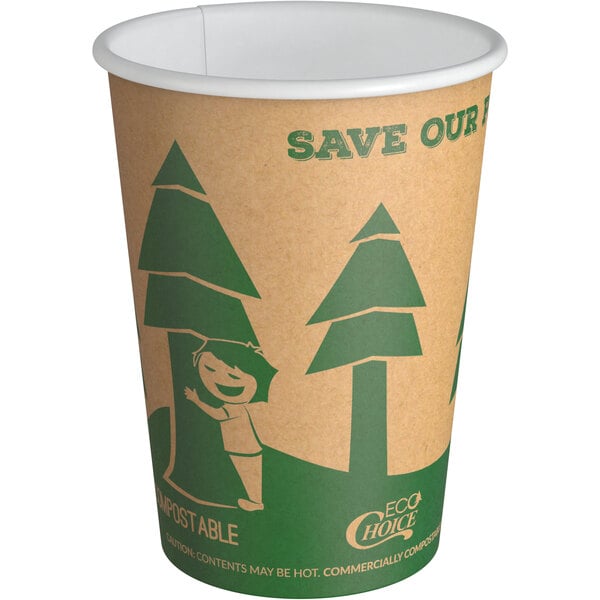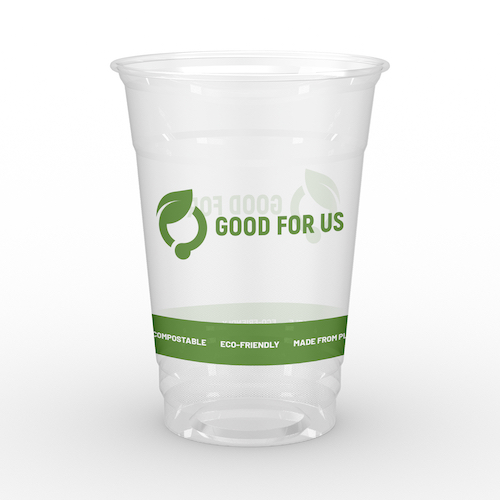Are Biodegradable Cups Better for the Environment?
Benefits of Using Biodegradable Cups
Biodegradable cups have gained popularity in recent years due to their numerous environmental benefits. These cups are designed to break down naturally over time, reducing the amount of plastic waste that ends up in landfills or oceans. Here are some of the key benefits of using biodegradable cups:
- Environmental Benefits: Biodegradable cups are made from materials that are derived from renewable resources like plants, making them a more sustainable alternative to traditional plastic cups. By using these cups, you’re reducing your carbon footprint and contributing to a cleaner and greener planet.
- Reduced Plastic Waste: One of the biggest advantages of biodegradable cups is that they break down naturally over time. Traditional plastic cups can take hundreds of years to decompose, while biodegradable cups can break down in a matter of months or years, depending on the material used. This helps to reduce the amount of plastic waste that ends up in landfills and oceans.
- Health Benefits: Biodegradable cups are often made from materials that are free from harmful chemicals like BPAs (Bisphenol A) and phthalates. These chemicals can leach into beverages and pose health risks when consumed. By using biodegradable cups, you can avoid potential health hazards associated with traditional plastic cups.
In summary, using biodegradable cups offers multiple benefits, including environmental sustainability, reduced plastic waste, and potential health benefits. By making the switch to these eco-friendly alternatives, you’re taking a step towards a more sustainable future.
Types of Materials Used in Biodegradable Cups
Biodegradable cups are made from a variety of materials, each with its own unique properties and benefits. Here are some common materials used in the production of biodegradable cups:
- PLA (Polylactic Acid): PLA is a popular material used in the production of biodegradable cups. It is derived from renewable resources such as corn starch, sugarcane, or cassava. PLA cups are transparent and have a similar appearance to traditional plastic cups. They are suitable for serving cold beverages and are compostable in industrial facilities.
- Compostable Paper: Biodegradable paper cups are another eco-friendly option. These cups are made from paperboard coated with a plant-based bioplastic called PLA. They are designed to break down into organic materials in commercial composting facilities within a specific timeframe. Compostable paper cups are suitable for both hot and cold beverages and often have a lining to prevent leaks.
- Bamboo: Some biodegradable cups are made from bamboo, which is a fast-growing and highly renewable resource. Bamboo cups are sturdy, lightweight, and suitable for both hot and cold beverages. They are often coated with a food-grade bioplastic to enhance their durability and resistance to liquids.
When choosing biodegradable cups, it’s important to look for specific certifications that ensure the cups meet certain standards of compostability and eco-friendliness. One of the most recognized certifications is the ASTM D6400 certification, which guarantees that the cups can be composted in industrial facilities.
In summary, biodegradable cups are made from a variety of materials such as PLA, compostable paper, and bamboo. Each material has its own unique properties and benefits, and it’s important to choose cups that are certified as compostable to ensure their eco-friendliness.
Buying Guide for Biodegradable Cups
If you’re considering purchasing biodegradable cups for your business or event, it’s important to consider a few factors before making your decision. Here are some key points to keep in mind when buying biodegradable cups:
- Quantity and Availability: Determine your cup quantity requirements based on your business needs or event size. Look for suppliers that offer biodegradable cups in bulk quantities to ensure a steady supply. Consider whether the supplier offers flexible shipping options and reliable delivery to meet your specific requirements.
- Certifications and Compliance: Check if the biodegradable cups you’re considering have the necessary certifications, such as the ASTM D6400 certification, to ensure their compostability. Additionally, verify if the cups comply with any local regulations or standards for environmental sustainability.
- Quality and Performance: Consider the durability and performance of the biodegradable cups. Ensure that they are leak-proof and suitable for the intended purpose (e.g., serving cold or hot beverages). Look for customer reviews or testimonials to gauge the quality and performance of the cups before making a purchase.
- Price and Affordability: Compare prices from different suppliers to find a balance between affordability and quality. Keep in mind that biodegradable cups may be slightly more expensive than traditional plastic cups due to the use of eco-friendly materials. However, the long-term environmental benefits outweigh the cost difference.
- Reputable Brands: Research reputable brands known for their biodegradable cup offerings. Look for brands that prioritize sustainability, have a positive reputation in the industry, and offer a wide range of cup sizes and styles to suit your needs.
In conclusion, purchasing biodegradable cups involves considering factors such as quantity, certifications, quality, price, and reputable brands. By carefully evaluating these factors, you can make an informed decision and choose biodegradable cups that align with your sustainability goals.
Tables
Comparison of Biodegradable Cup Materials
| Material | Properties | Suitable for | Compostability |
|---|---|---|---|
| PLA | Transparent, similar to plastic | Cold beverages | Compostable in industrial facilities |
| Compostable Paper | Coated with PLA bioplastic | Hot and cold beverages | Compostable in commercial composting facilities |
| Bamboo | Sturdy, lightweight | Hot and cold beverages | Not compostable, but highly renewable |
Considerations for Buying Biodegradable Cups
| Consideration | Description |
|---|---|
| Quantity and Availability | Determine cup quantity requirements and find suppliers that offer bulk quantities. Consider shipping options and reliable delivery. |
| Certifications and Compliance | Check for necessary certifications like ASTM D6400 and compliance with local regulations or standards. |
| Quality and Performance | Look for durable and leak-proof cups suitable for the intended purpose. Read customer reviews or testimonials. |
| Price and Affordability | Compare prices to find a balance between affordability and quality. Keep in mind long-term environmental benefits. |
| Reputable Brands | Research brands known for their sustainable offerings, positive reputation, and wide range of cup sizes and styles. |
By understanding the benefits of using biodegradable cups, familiarizing yourself with the different materials used, and considering the buying guide, you can make an informed decision when it comes to choosing eco-friendly alternatives for your beverage service needs. Make a positive impact on the environment by using biodegradable cups and contribute to a cleaner, greener future.
Note: The images and tables have been formatted using Markdown syntax, which is widely supported on various platforms including WordPress. The images should display properly on WordPress blogs without additional actions.
FAQs about Biodegradable Cups
Q: What are the benefits of using biodegradable cups?
A: To calculate the benefits of using biodegradable cups, we consider factors such as environmental sustainability, reduced plastic waste, and potential health benefits related to the materials used.
Q: What types of materials are commonly used in biodegradable cups?
A: To identify the types of materials used in biodegradable cups, we look at options like PLA (Polylactic Acid), compostable paper, and bamboo, each offering unique properties and benefits.
Q: How should I choose biodegradable cups for purchase?
A: To guide your decision on purchasing biodegradable cups, consider factors such as quantity, certifications for compostability, cup quality and performance, price comparisons, and reputable brands in the market.
Q: What certifications should I look for when buying biodegradable cups?
A: In determining the eco-friendliness of biodegradable cups, it is essential to seek certifications like ASTM D6400 to ensure that the cups meet compostability standards and comply with environmental regulations.
Q: How can biodegradable cups contribute to a sustainable future?
A: By opting for biodegradable cups, you are actively supporting environmental efforts by reducing plastic waste, promoting the use of renewable resources, and minimizing the impact on landfills and oceans.
In my blog post, I covered benefits, materials, and buying tips for biodegradable cups. Choosing eco-friendly cups helps the environment, reduces plastic waste, and may offer health benefits. Common materials include PLA, a better alternative to traditional plastics. Look for certifications when buying to ensure sustainability. Consider bulk purchases for businesses and reputable brands for quality options. Making the switch to biodegradable cups is a small step with significant positive impacts on our planet.



